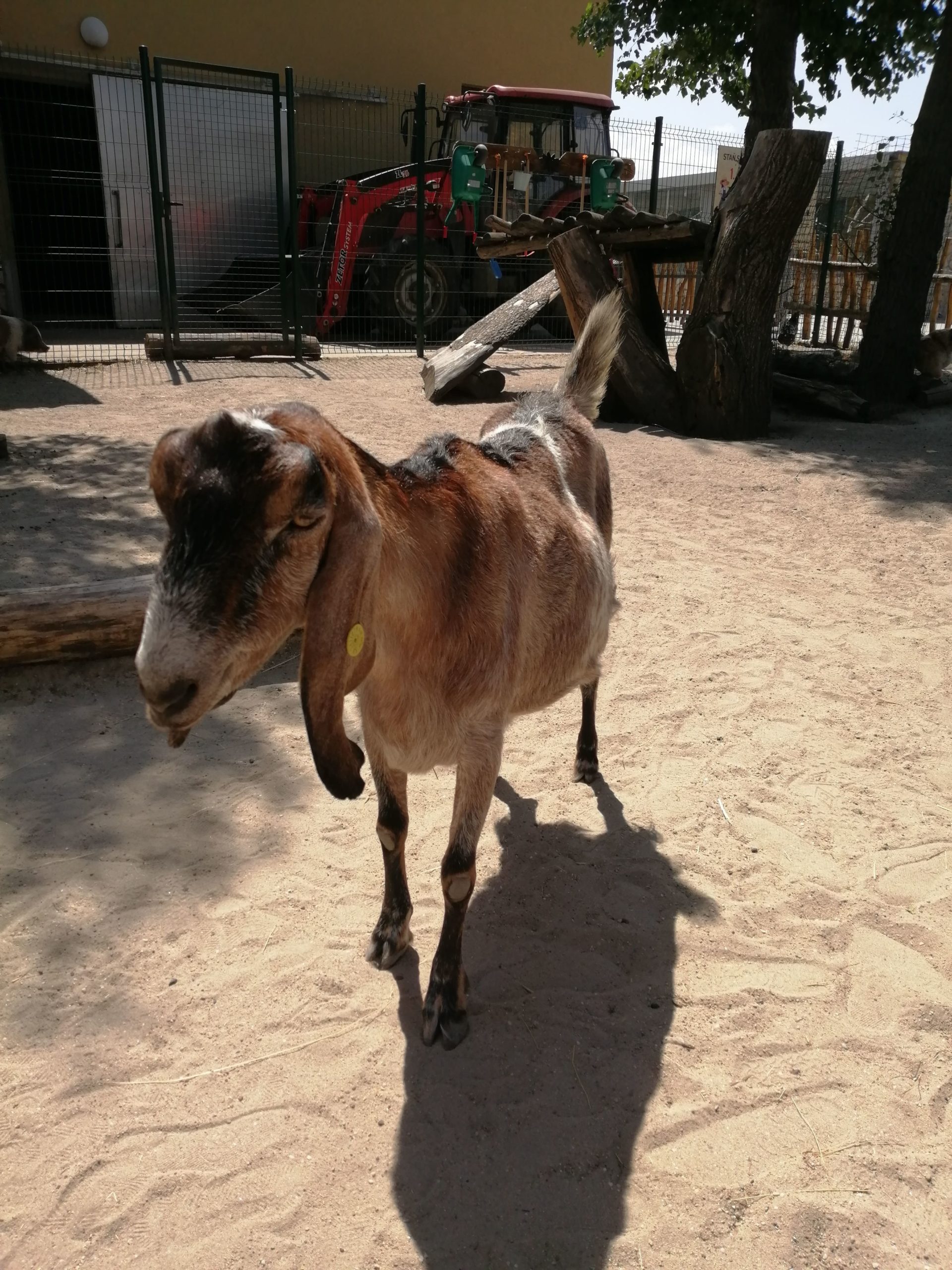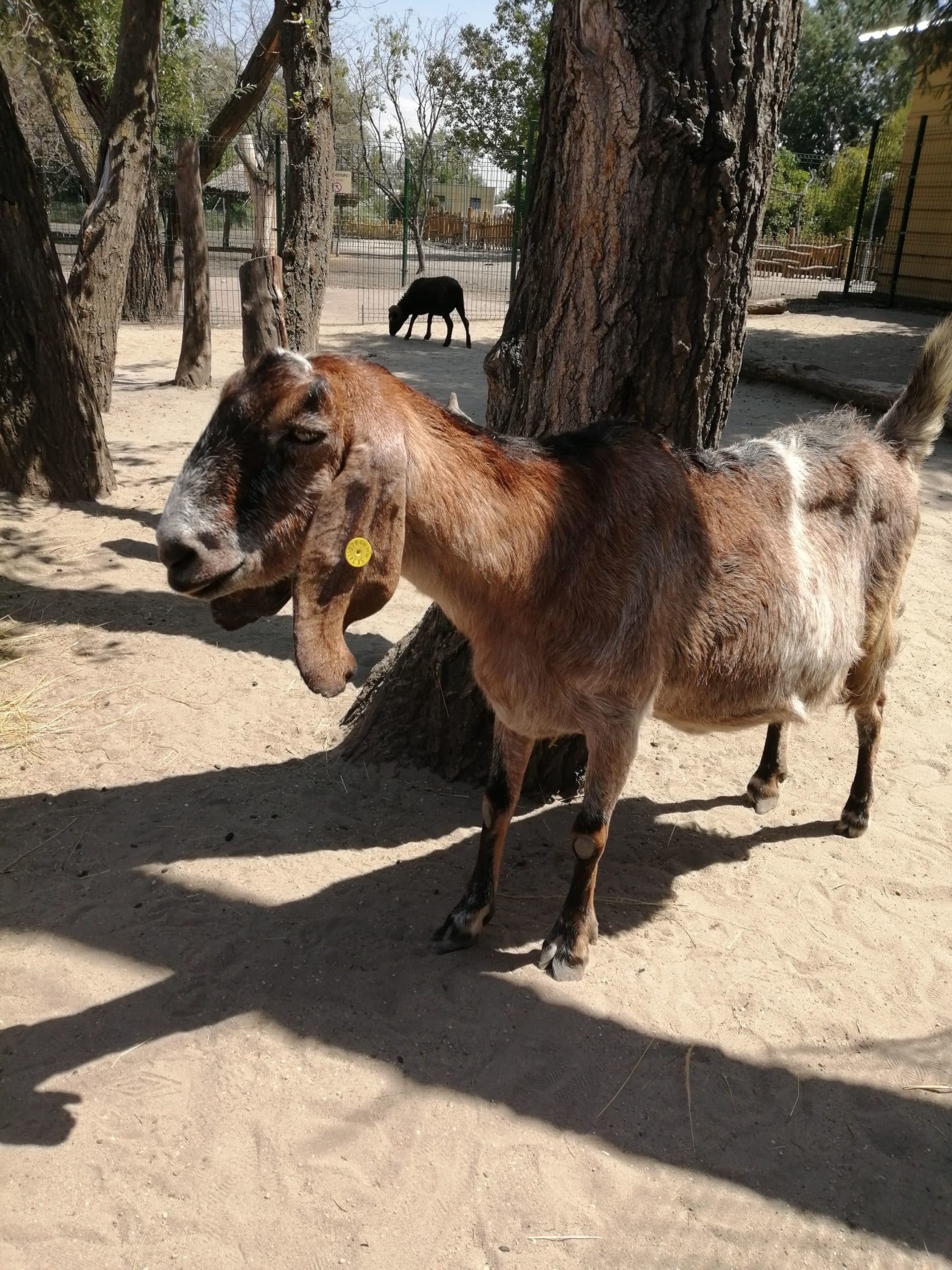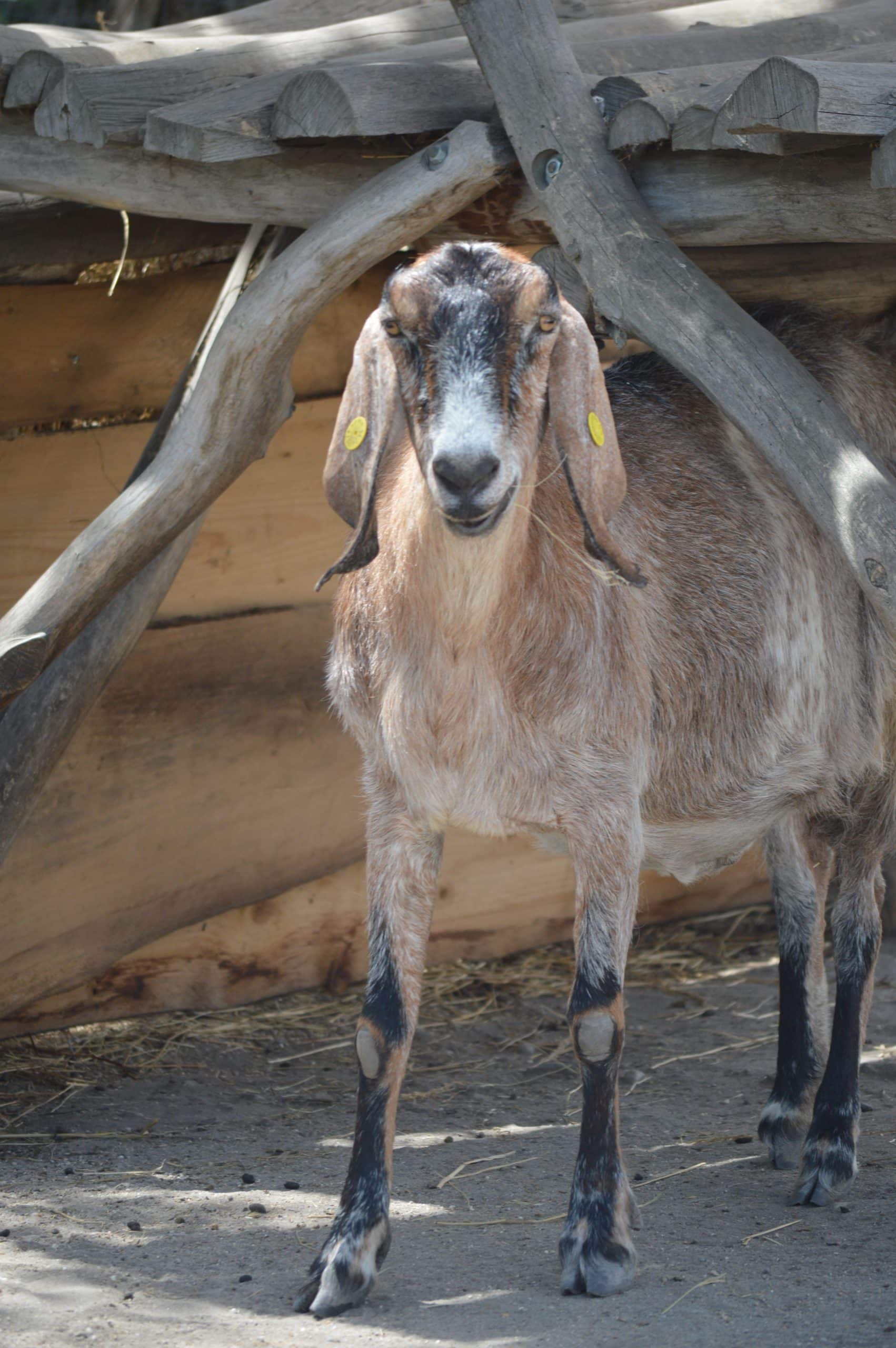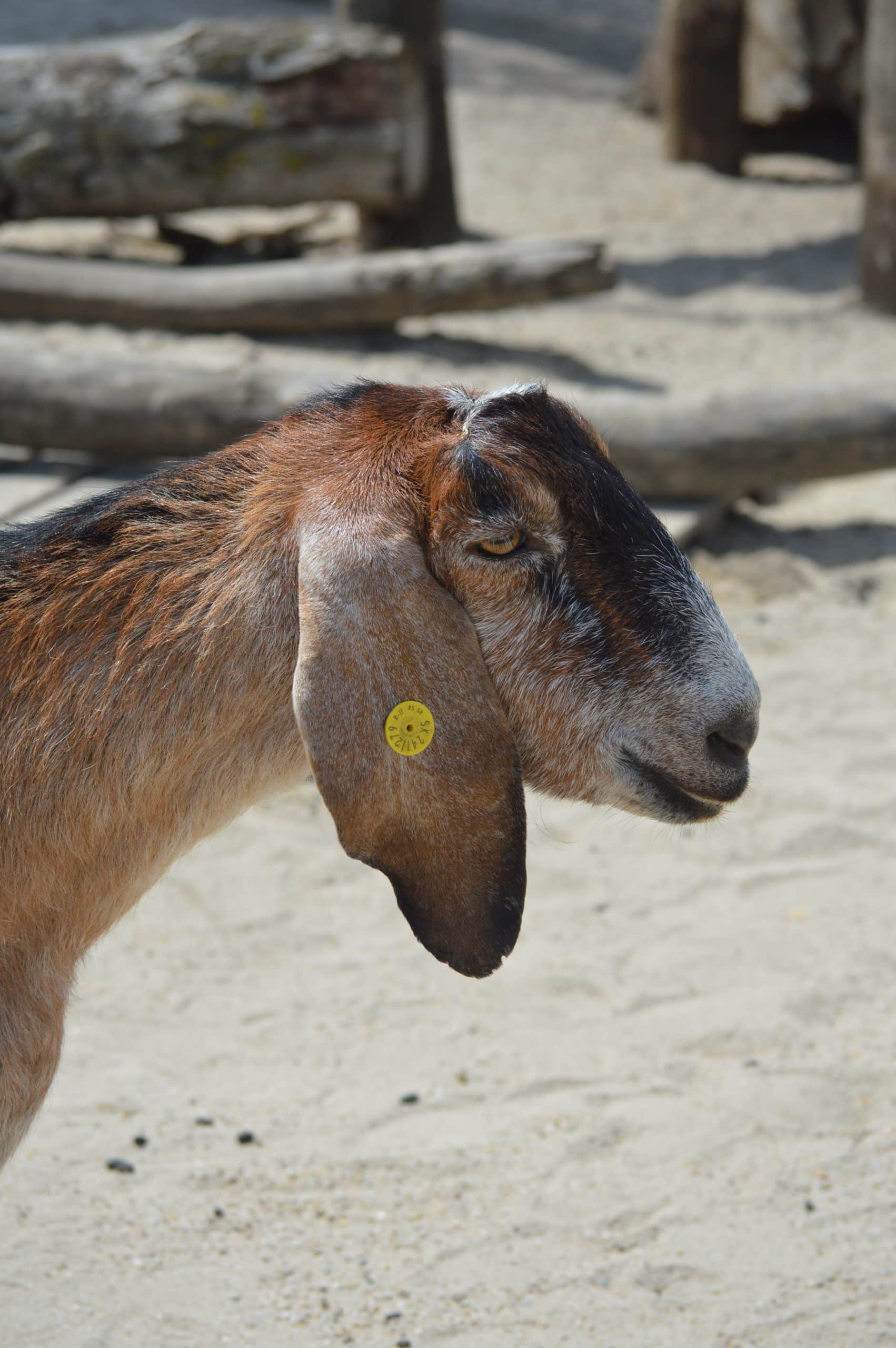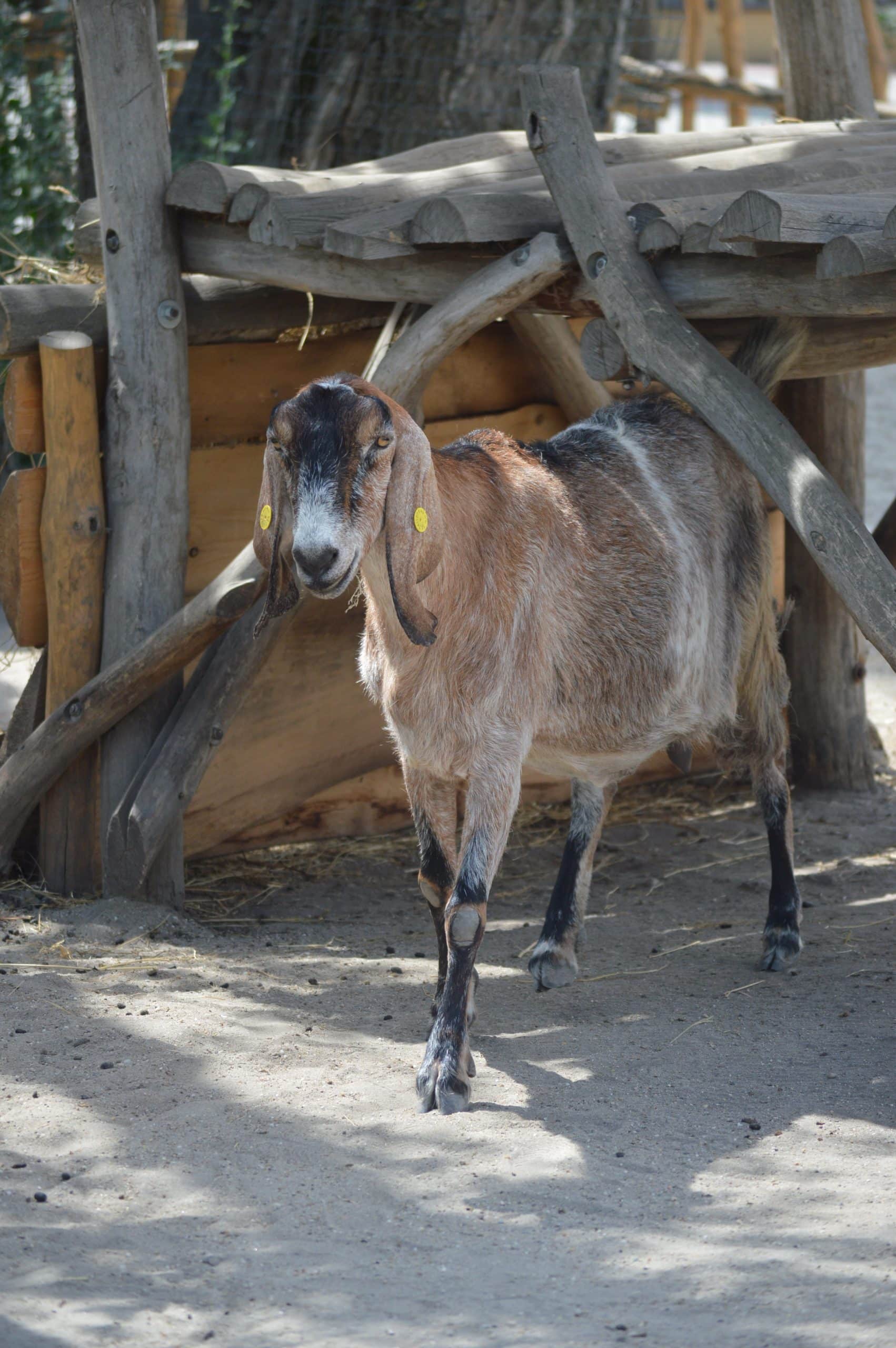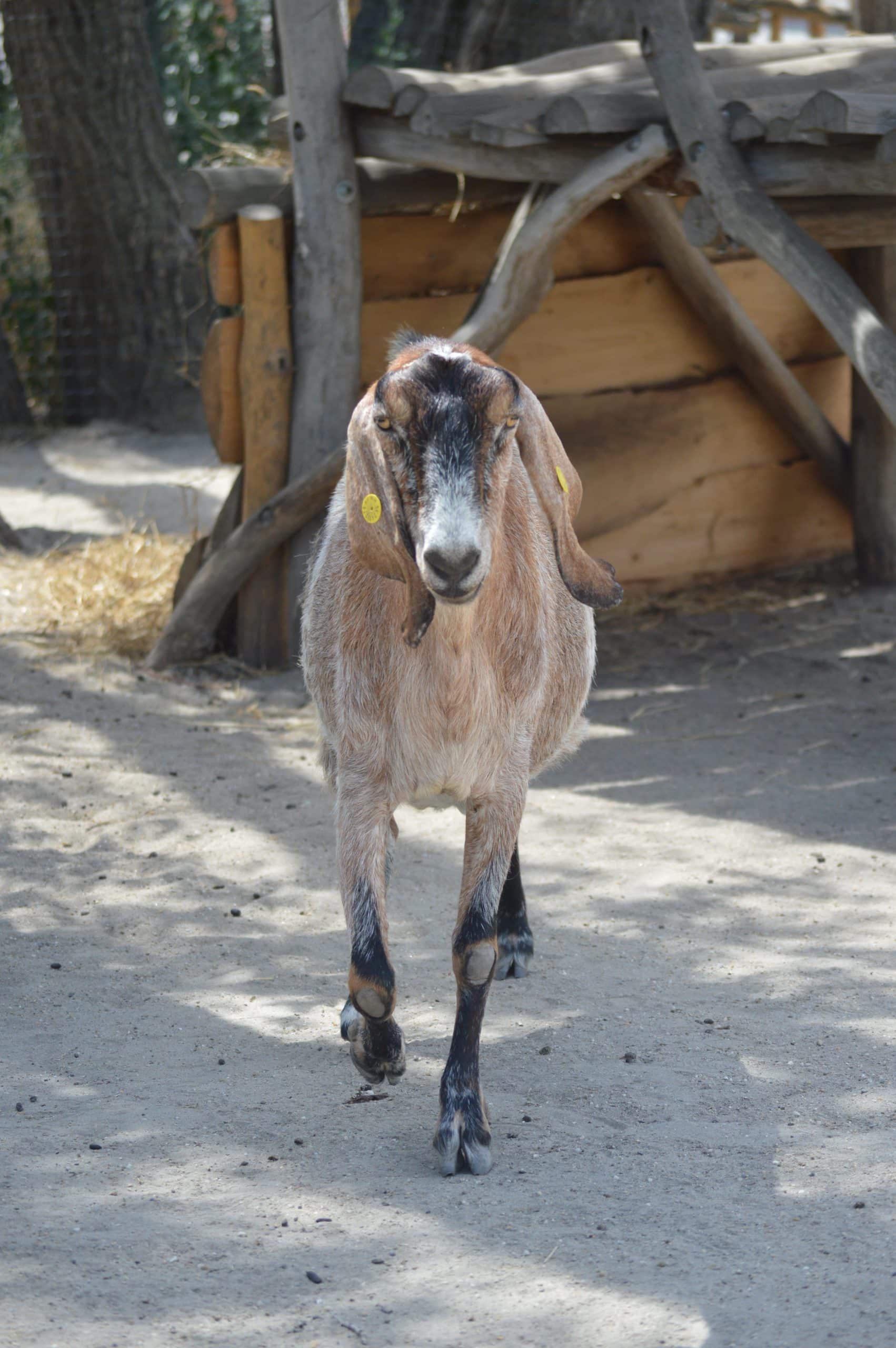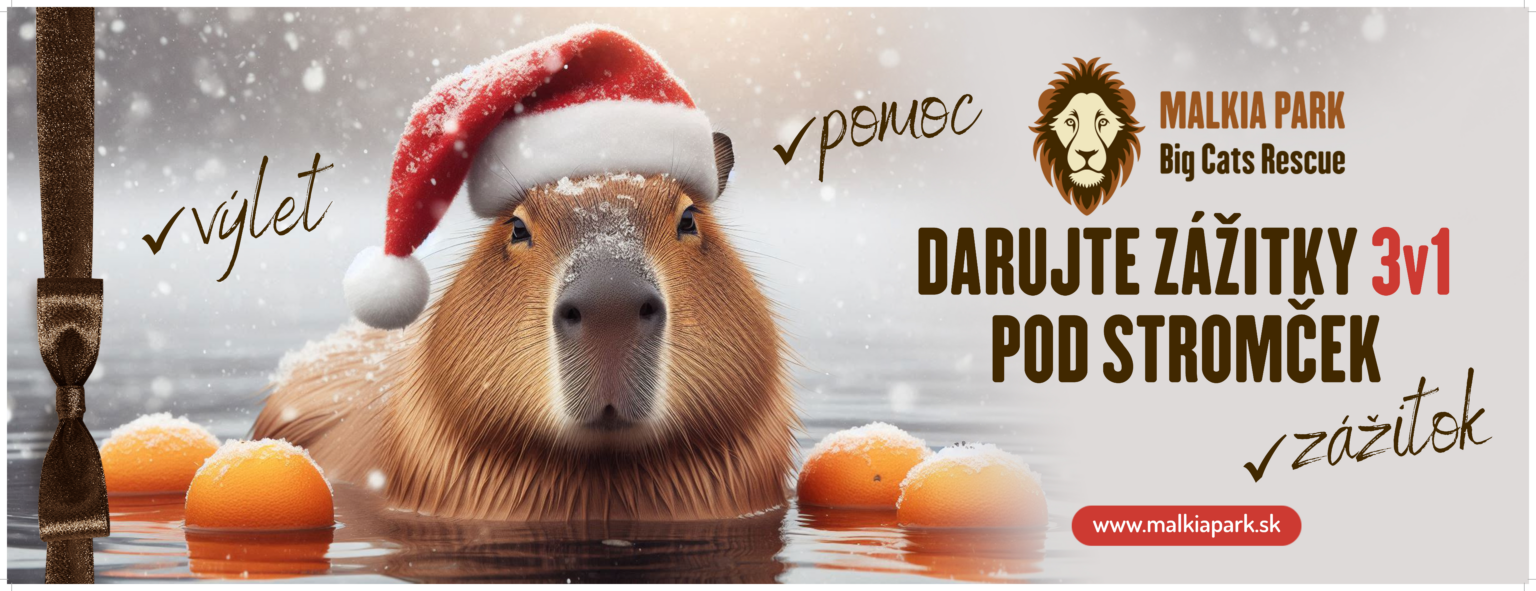The goat is a small ruminant. Goats are closely related to sheep, as together with sheep, they are among the oldest domesticated animals. Goats are not as solidly built as sheep. Goats also have straighter hair and shorter tails than sheep. Both male and female goats can have horns and beard. More than 300 breeds of goats have been bred in the course of coexistence with man. The colour range is wide – from pure white to black, various shades of brown and different mottling.
Goats tear food rather than chew it. They prefer harder, fibrous plants, and are not bothered by thorns. They also graze the branches of bushes – so where goats graze, unwanted shrubs never spread too much.
Goats are herd animals. In our conditions, they are often kept extensively, sometimes together with sheep. Most breeders allow them mate once a year to ensure a supply of both milk and kid meat.
The goats can climb over a 1.6 metre high fence.
Goats have no incisors in the upper jaw, just a horny patch.
Goat breeding on the territory of Slovakia is widespread mainly among private persons, within the economic production it is only a marginal sector. Goats provide milk, meat, skin, and horn, and are popular for grazing on hard, hard-to-reach places with plants that other ruminants would reject.
Cashmere is a substance that is extracted from the wool of the Cashmere goat.
Considering live weight, the goat can be considered the most productive animal in terms of milk production, as it produces 10 to 20 times its live weight of milk per year.
